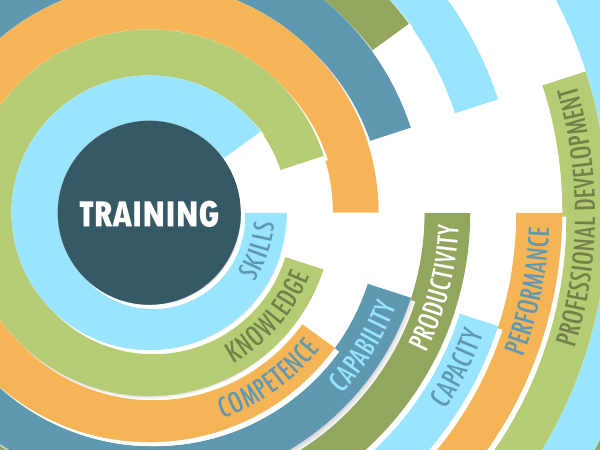Has the way that EMDR transforms lives caught your attention yet? You want this powerful and effective therapy working in your practice. Figuring out how to get training in EMDR is the first step. There are some requirements. Some mental health professionals aren’t eligible. The following information can help you get on the path to your new certification:
Training in EMDR: Requirements
There are some prerequisites to meet before training in EMDR. To register you must provide information about your license, unless you are a student or your license is pending. Keep in mind that being a full EMDRIA member requires being a licensed mental health professional.
All qualifying doctors, registered nurses, and mental health clinicians must be licensed to practice in their state. Having a specialization in psychiatric mental health nursing is required for RNs in addition to their Master of Science in Nursing.
Clinicians must have their Masters Degree in a related mental health discipline, such as social work, psychiatry, psychotherapy, counseling, psychology, or marriage family therapy.
Those whose licenses are pending, whether as an associate or intern or as having a temporary, provisional, or limited license may start their training in EMDR. Their Master’s Degree must be in the mental health field.
But even those who haven’t completed their Master may participate, as long as they are enrolled in an applicable Master’s or Doctoral program. Students have to be in the internship or practicum part of their program.
Although graduate students aren’t required to have a license, they must be on the path to becoming licensed, working supervised by a fully licensed clinician in the mental health field. Students have to provide their internship or practicum details, transcripts, and a letter from their supervisor. The letter should have the supervisor’s license number and information.
Levels of Training in EMDR
Have you thought about how far you want to take your training in EMDR? Thinking through these pathways now can help you plot the timing of the steps. This can help your career to advance how you want it to go. You can settle with being an EMDR therapist or go further by becoming an EMDRIA certified therapist or even an EMDR consultant like Dr. Andrew Dobo.
Completing the first level of training allows you to become an EMDR therapist. Unlike the next two levels, you don’t need a certain number of cumulative EMDR clients, sessions, or CIT consultation. EMDR therapists are those who complete basic training parts 1 and 2. They must also have 10 hours of therapist consultation.
The next level of training in EMDR gets you the EMDRIA certified therapist status. This requires an additional 12 EMDRIA training credit hours as well as 20 more hours of therapist consultation. To be an EMDRIA certified therapist, you’ll also need 25 cumulative EMDR clients and 50 cumulative EMDR sessions – but you still won’t need any hours of CIT consultation.
Finally, there’s becoming an EMDR consultant. There are no additional EMDRIA credit hours or therapist consultation hours, but it does require 75 cumulative EMDR clients and 300 cumulative EMDR sessions. Being an EMDR consultant requires three years of EMDR experience. Also, for a consultant to maintain the credential, they are required to complete 12 hours of EMDR continuing education every two years.
Basic Training in EMDR: What You Should Know
Basic EMDR training familiarizes you with a wide array of EMDR therapy applications. It helps you become a comfortable, competent EMDR therapist who is effective at using EMDR in a variety of cases.
Much focus is placed on clients’ therapeutic needs. It is important to know how to use EMDR safely. Lecture, demonstrations, and supervised practice will all be put to use in your training in EMDR.
Experiencing EMDR as a client is part of your training. You’ll get to learn about Shapiro’s Adaptive Information Processing Model, which equips therapists with the principles and protocol to predict treatment outcome.
The training takes you through the history and evolution of EMDR therapy and gives you an understanding of its model, mechanism, and method. As you learn the basic hypotheses, applications, and clinical implications of EMDR, how it differentiates from other therapeutic models, you gain deeper insight into the impact of trauma and how to treat it.
Basic training in EMDR has quite a list of objectives – the program is 50 hours long. You’ll come through it well-versed in the 3 phases and 8 procedural steps of EMDR. You’ll be equipped to be of more help to clients suffering from PTSD, anxiety, grief, phobias, abuse, and other traumatic events.
If you want to move on to more advanced training in EMDR, such as earning your certification, you’ll come out of basic training with a better understanding of how to do that.
EMDR Educators of Florida is here to bridge the gap between where you are now in your mental health career to where you’re going. Our EMDR training program is EMDRIA approved, and Dr. Dobo, our EMDR trainer and consultant is passionate and effective at making EMDR training a comfortable, insightful, and enjoyable experience. Check out our training calendar to choose your date to start training in EMDR.



0 Comments